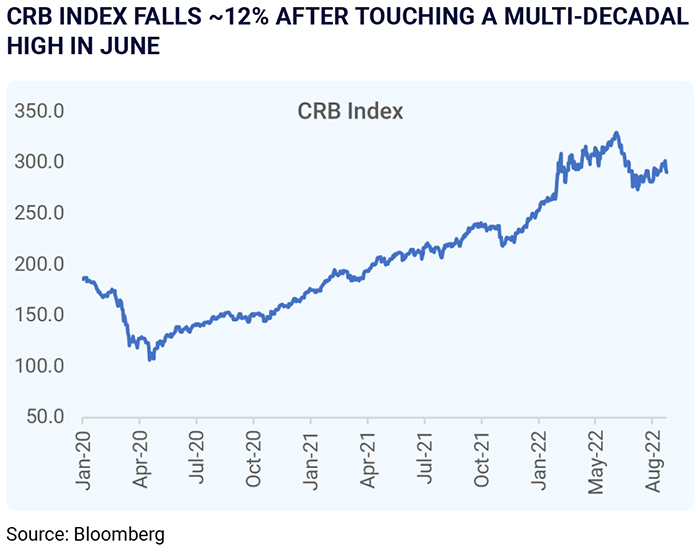Over the last two years, there have been big movements in the prices of several commodities. The Brent oil price increased from a low of $20 a barrel in April 2020, during the first Covid-19 wave to a peak of $122, in March 2022, after Russia invaded Ukraine. The sharp rally in the prices was not limited to only oil. Even prices of copper, wheat, and other commodities also witnessed sharp movement over this period. Global indices of commodity prices (as represented by the CRB index) almost tripled from April 2020 to March 2022.

However, recently the prices of some of these commodities have started
to fall sharply. The oil prices decreased by about 30% between June and
August. The overall CRB index has fallen 12% from its peak.
One of the obvious reasons for such a decline in the prices of
commodities is slowing global growth. China's growth rate has faltered
dramatically (particularly in the commodity-intensive manufacturing
sector). It turned negative in the second quarter, as Shanghai and some
other cities endured shutdowns in support of a futile zero-Covid policy.
Even though the Chinese government has been announcing several small
measures to revitalize the economy, no big bang stimulus has been
announced. Europe is hard-hit by the side effects of the Russian invasion
of Ukraine. Even US growth is slower in 2022 than last year, with many
proclaiming that a recession has begun.
According to the IMF's most recent World Economic Outlook update, global
growth is projected to slow substantially, from 6.1 % in 2021 to 3.2 % in 2022
and 2.9 % in 2023. Slowing growth means lower demand for commodities
and hence lower prices.
Slow global growth has direct implications on
commodity

